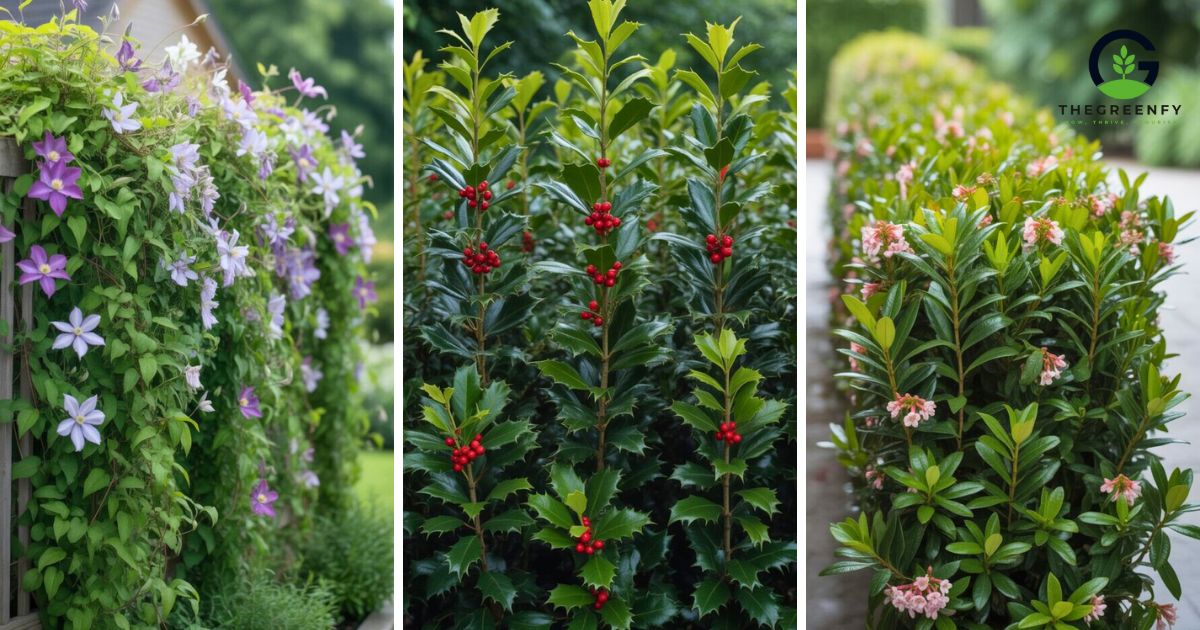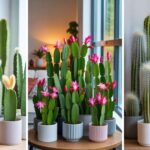Privacy in your yard can make your outdoor space feel more relaxing and comfortable. I’ve found that using plants is a natural way to create privacy without the need for fences or walls.
Privacy plants offer a simple and beautiful solution to block unwanted views and make your garden feel more secluded.
There are so many types of plants that work well for privacy, trees, shrubs, vines. Some shoot up fast, others squeeze into tight spaces.
When I pick out privacy plants, I always think about sunlight and how tall I want them to get. It’s all about what fits best in my yard.
1. Emerald Green Arborvitae
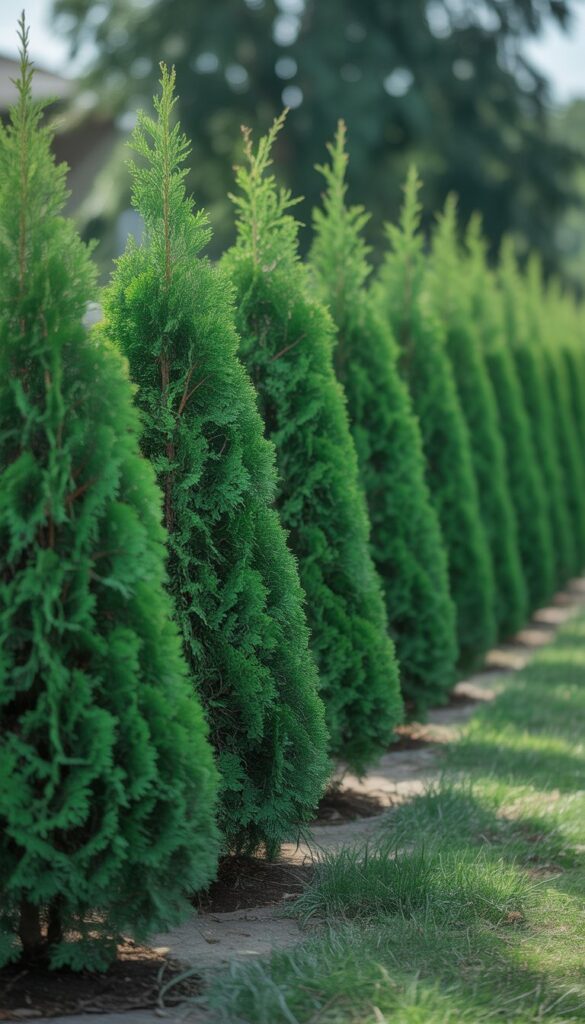
I like using Emerald Green Arborvitae for privacy because it grows in neat, tall columns. It creates a dense screen that blocks views, making it perfect for yards.
This tree needs full sun and well-drained soil. It puts on about a foot of growth per year and stays green all year.
Taking care of it is easy. Just water regularly at first, then less after it’s established.
I find it low maintenance and tidy-looking—no fuss, just green walls.
2. Japanese Privet
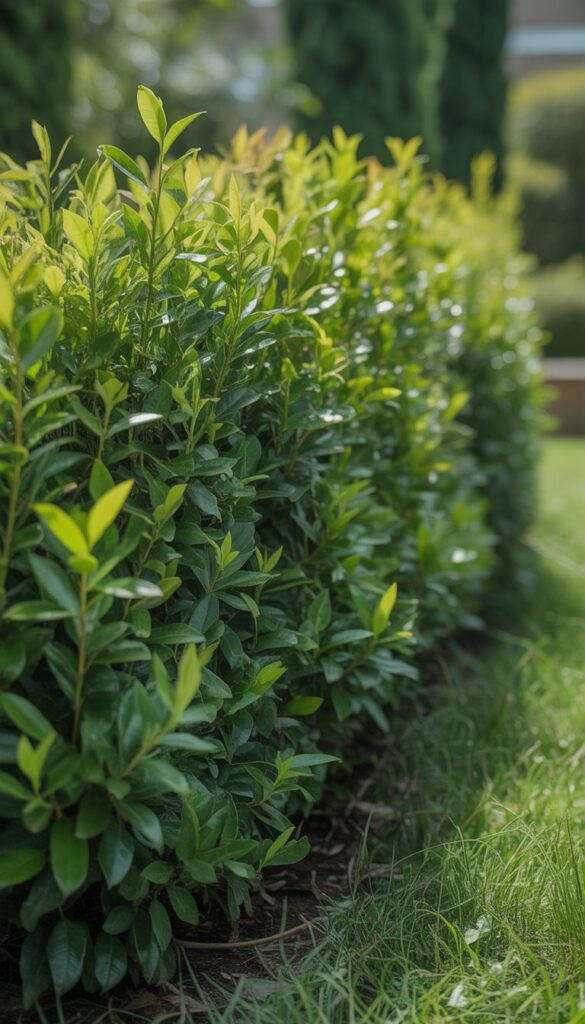
I like Japanese Privet because it grows fast and makes a thick privacy hedge. Its dark green leaves stay glossy all year, which keeps my yard looking nice.
It does well in sun or partial shade and handles heat and drought once it’s set. I trim it regularly to keep the shape tidy and dense.
It also has small white flowers in late spring. I’ll admit, I’m not wild about the smell, but it’s a great, low-maintenance choice for privacy.
3. Clumping Bamboo

I like clumping bamboo because it stays in one spot. It grows in tight groups, so it won’t spread into your neighbor’s yard.
Clumping bamboo grows fast and stays green year-round. It creates a nice, tall screen for privacy.
If you want low maintenance, clumping bamboo works well. It’s less invasive than running bamboo and great for small spaces.
4. Escallonia
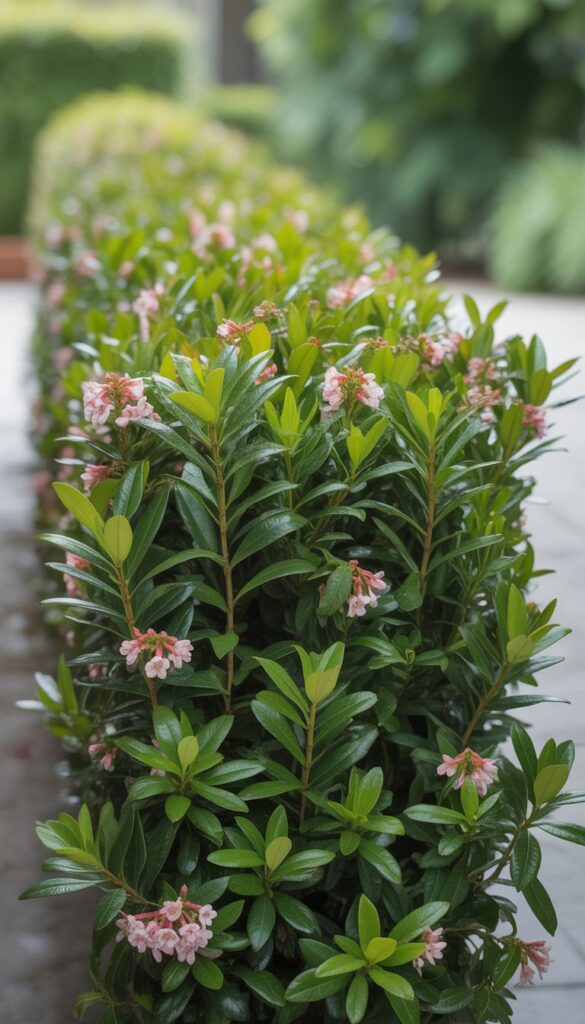
I like Escallonia for its glossy green leaves and sweet-smelling flowers. It stays evergreen all year, so you’re never left with bare branches.
This shrub is tough and handles wind and salty air well. It’s a favorite near the coast or in windy spots.
Plant them about 45 cm apart if you want a dense hedge. They need some sun and well-drained soil.
They’re easy to prune and keep in shape, which I appreciate.
5. Leyland Cypress
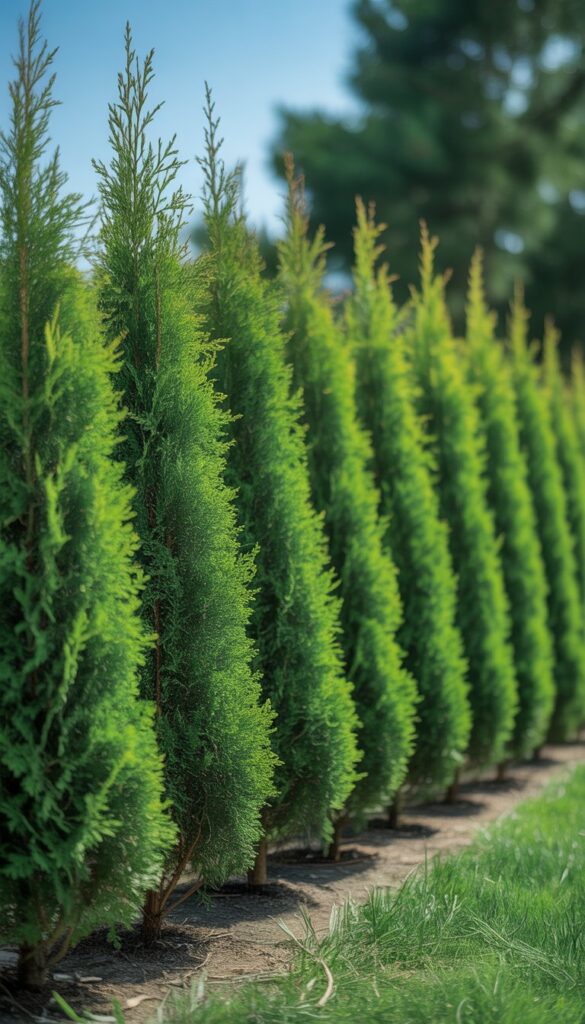
I like using Leyland Cypress for quick privacy. It grows very fast, about 3 to 5 feet each year.
Its dense, green foliage makes a nice, natural screen. This tree does well in many soil types and handles heat and drought fairly well.
Once it’s established, it needs little care. If you need something fast and effective, Leyland Cypress is a solid choice for me.
It creates a lush, tall barrier that feels private and green all year.
6. Privet Hedge
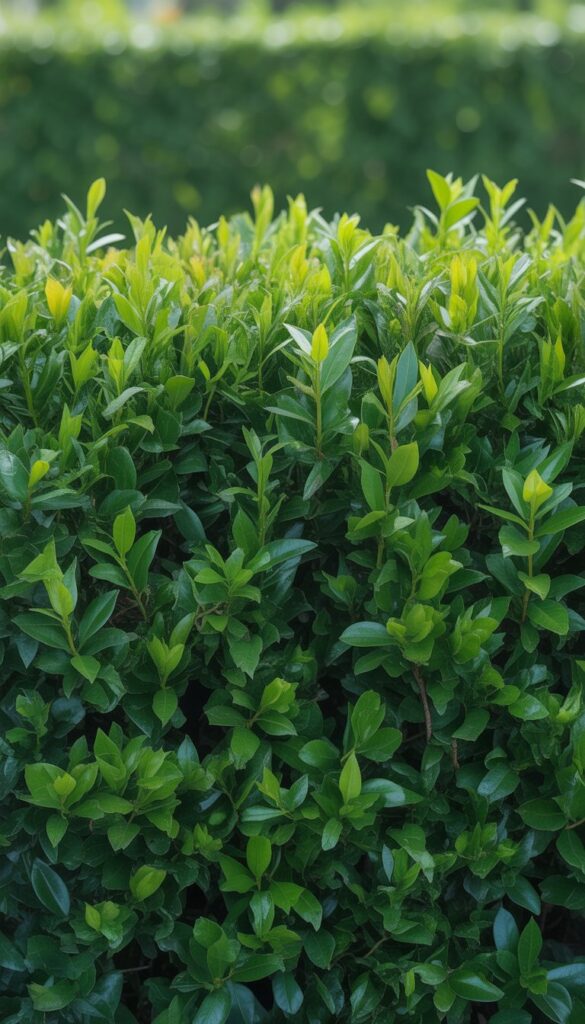
I like using privet hedges because they grow fast and form a thick, green wall. This makes them great for privacy and blocking wind or noise.
Privet plants need regular trimming to keep their shape. They handle pruning well, so shaping them is easy.
If you want a hardy, low-maintenance option, privet hedges are a solid choice for almost any garden space.
7. Eastern Redcedar
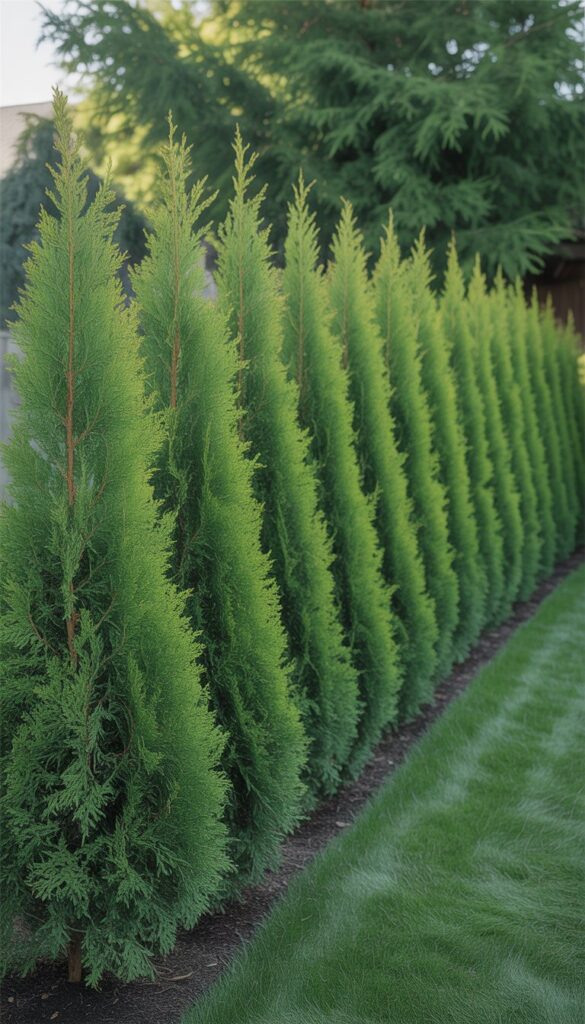
I like using Eastern Redcedar for privacy because it grows tall and dense. The bluish-green leaves look nice year-round.
This tree also attracts birds and butterflies, which adds life to my yard. It’s tough too—it can handle drought and doesn’t need much care.
For a strong privacy screen, I plant them about 7 feet apart. They can reach 40 to 50 feet tall, making them perfect to block views and wind.
8. Faux Holly
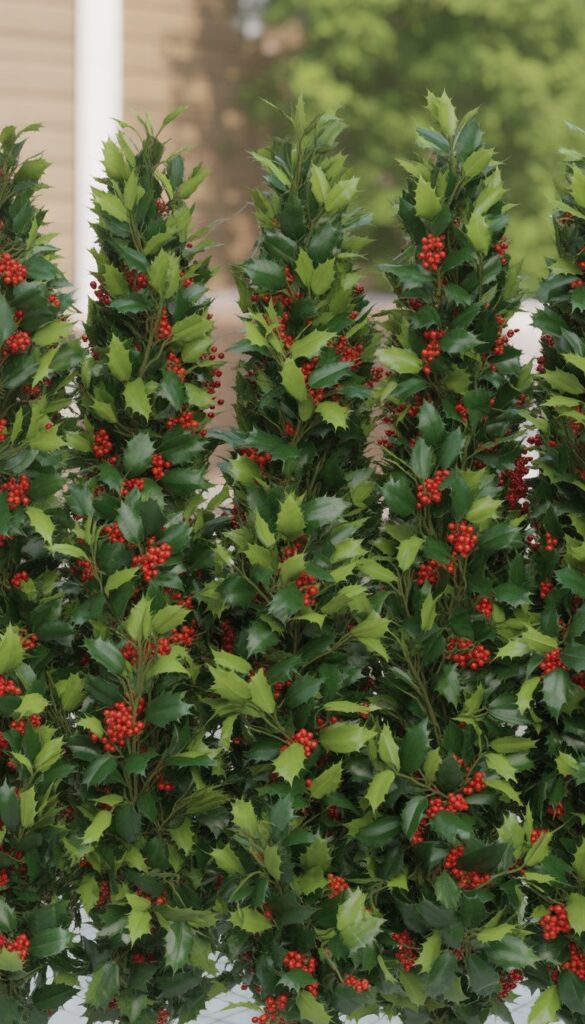
I like using faux holly for privacy because it looks nice year-round. The leaves are green and jagged, and they come with red berries that add color.
This fake plant works well both inside and outside. It’s easy to install and doesn’t need any care like watering or trimming.
Some products come as panels or bushes, making them good for creating privacy walls quickly. They also feel realistic, so they blend in with real plants around.
9. Boxwood
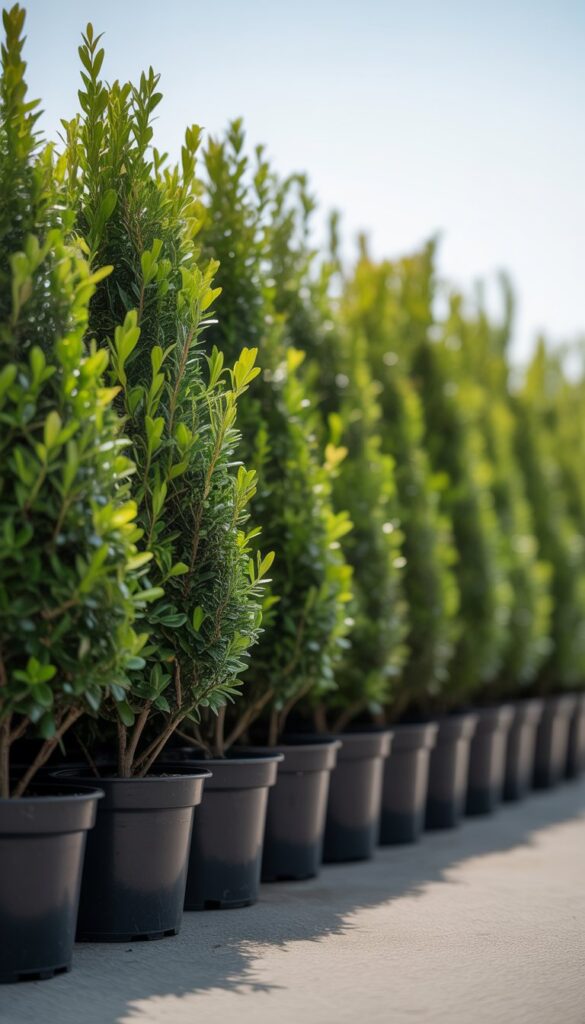
I like using boxwood for privacy because it stays green all year. It grows slowly but forms a thick hedge that blocks views well.
Boxwood is easy to shape. I trim it to keep neat lines or even make fun shapes like spheres or cones.
If you want less work, artificial boxwood panels are a good option. They need no watering or trimming and still look realistic.
10. Weeping Pussy Willow
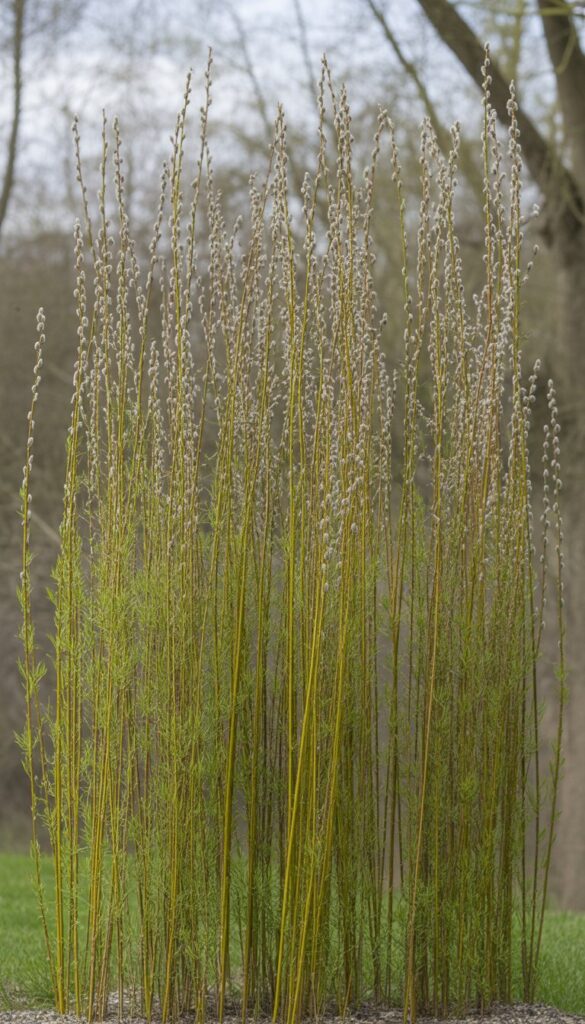
I like the Weeping Pussy Willow because of its graceful, drooping branches. It produces soft, fuzzy catkins in early spring, which add a gentle touch to my garden.
This plant prefers moist soil and full sun, making it perfect near ponds or damp spots. It grows quickly, so it creates a nice privacy screen in a short time.
If you want something unique, try the Weeping French Pussy Willow. It adds style while giving you some privacy.
Just make sure it has enough water to thrive.
11. Clematis Vine
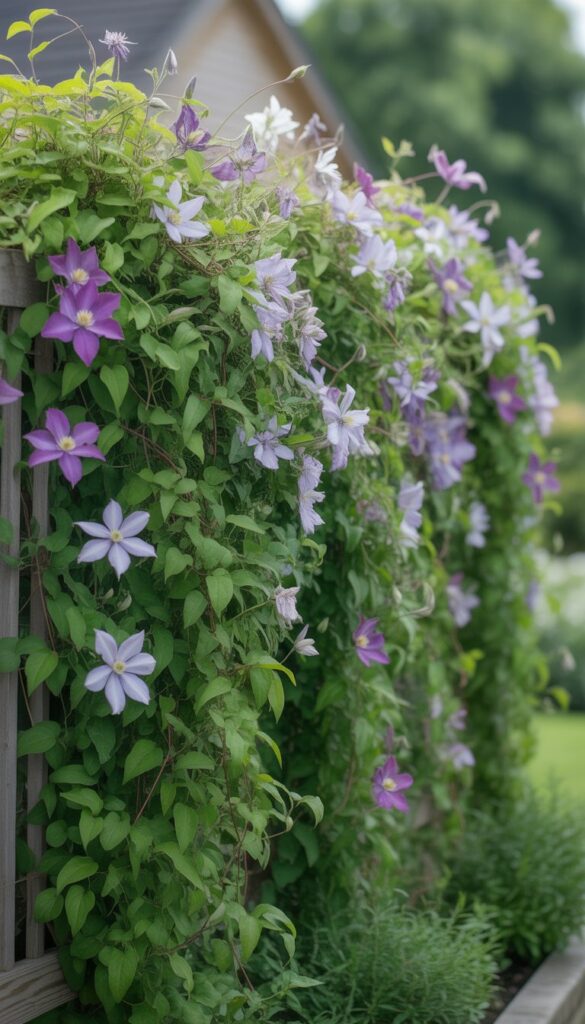
I like clematis because it grows fast and tall, sometimes reaching 20 to 30 feet. It’s great for covering fences or walls to add privacy quickly.
Clematis comes in many colors and flower shapes. You can pick one that blooms from spring to fall, so your privacy screen looks nice all season.
To keep it healthy, I trim it each year and make sure its roots stay cool while the top gets plenty of sun. This helps it grow strong and full.
12. Star Jasmine
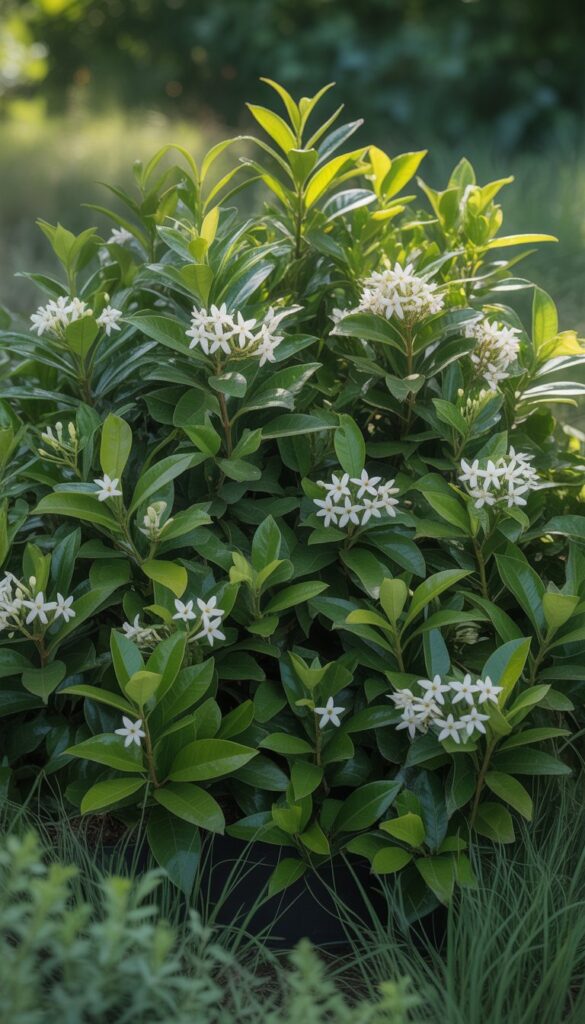
I like Star Jasmine because it grows fast and gives great privacy. It climbs fences or trellises well, reaching up to 20 feet.
The leaves stay green all year, so you get constant coverage. The white flowers smell sweet in spring and summer.
This plant is easy to care for and rarely has pest problems. If you want a natural screen with a nice scent, Star Jasmine is a smart pick for your garden.
13. Southern Wax Myrtle
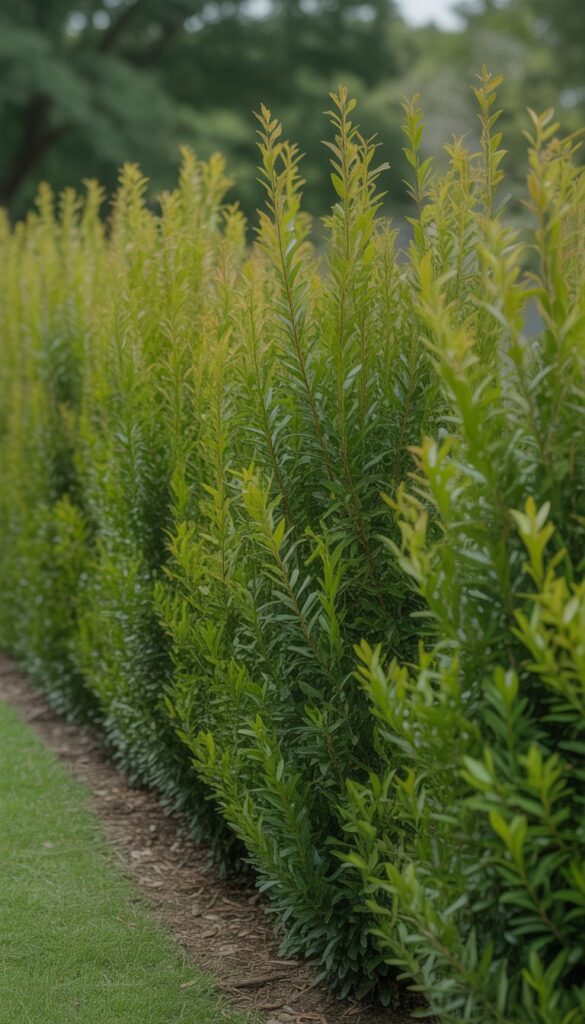
I like Southern Wax Myrtle for its fast growth and dense leaves. It makes a natural privacy screen that works well in many yard styles.
The shrub stays green all year and has a nice scent. Birds also love its small waxy berries.
It can grow up to 15 feet tall and wide. Plus, it handles sun, shade, wind, and salty soil, which makes it very tough.
If you want a low-maintenance plant that looks good and offers privacy, this one is a smart choice.
14. Red Tip Photinia
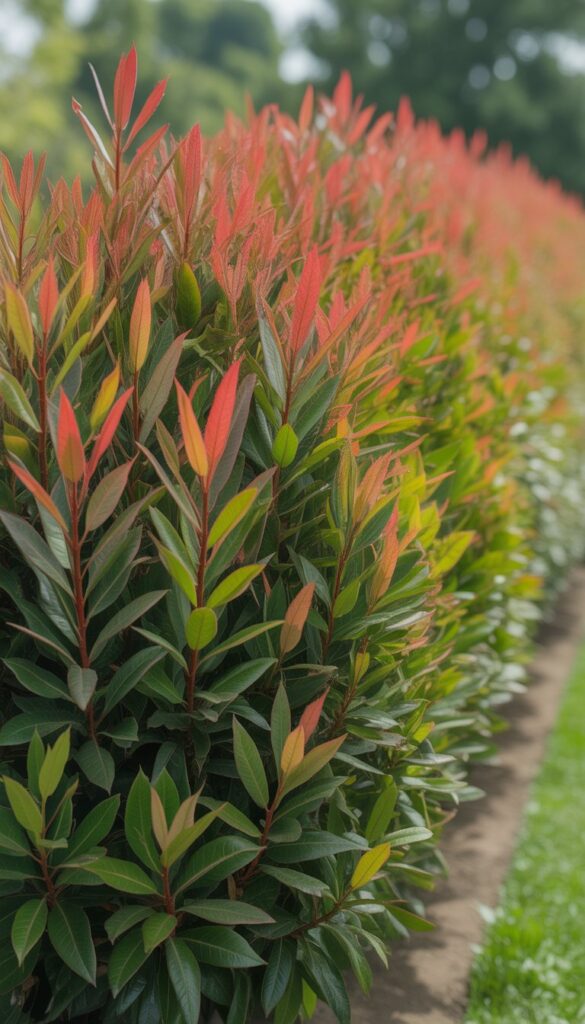
I love Red Tip Photinia for privacy. It grows fast and always looks lively.
The new leaves start out bright red, then mellow into green. That changing color adds a fun splash to the yard.
Red Tip Photinia can shoot up to 6 or even 10 feet tall, sometimes more. I trim mine pretty often to keep it looking thick and tidy.
This plant’s easygoing, but I do keep an eye out for leaf spot disease. If it pops up, it’s usually not a big deal and I can treat it.
It even grows well in containers if you’re short on space. Honestly, it’s a trusty pick for a vibrant privacy hedge.
15. Hicks Yew
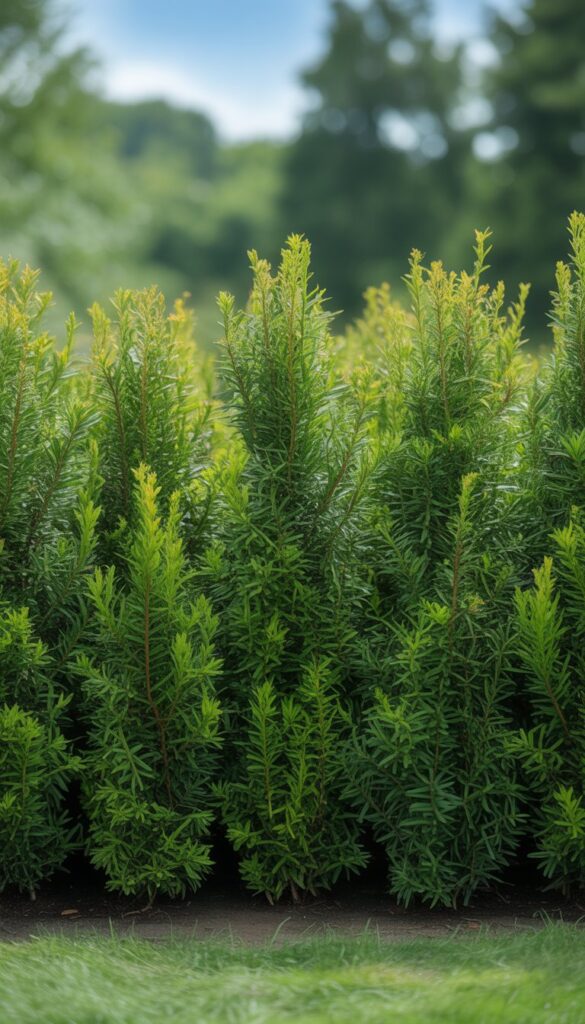
Hicks Yew is one of my favorites for privacy screens. It grows tall and stays pretty narrow, so it fits tight spaces.
The dark green leaves shine all year. I like that I can prune it hard, and it still bounces back dense and neat.
It’s easy to care for and works in sun or shade. That flexibility makes it a solid choice for most yards.
16. Spiraea Shrub
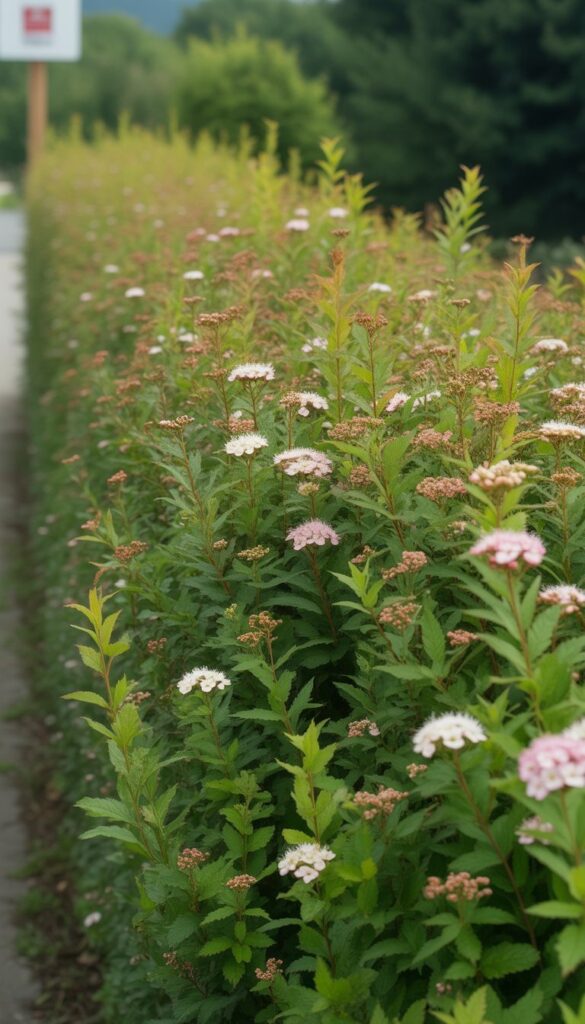
Spiraea shrubs grow fast and burst with pretty flowers. You can find them in pink, white, and even purple.
I just prune after they flower and toss on some mulch to keep roots cool. That’s about it for care.
These shrubs bring in pollinators, so my garden’s always buzzing. I use them for low hedges or borders, and they never disappoint.
17. Bamboo Palm
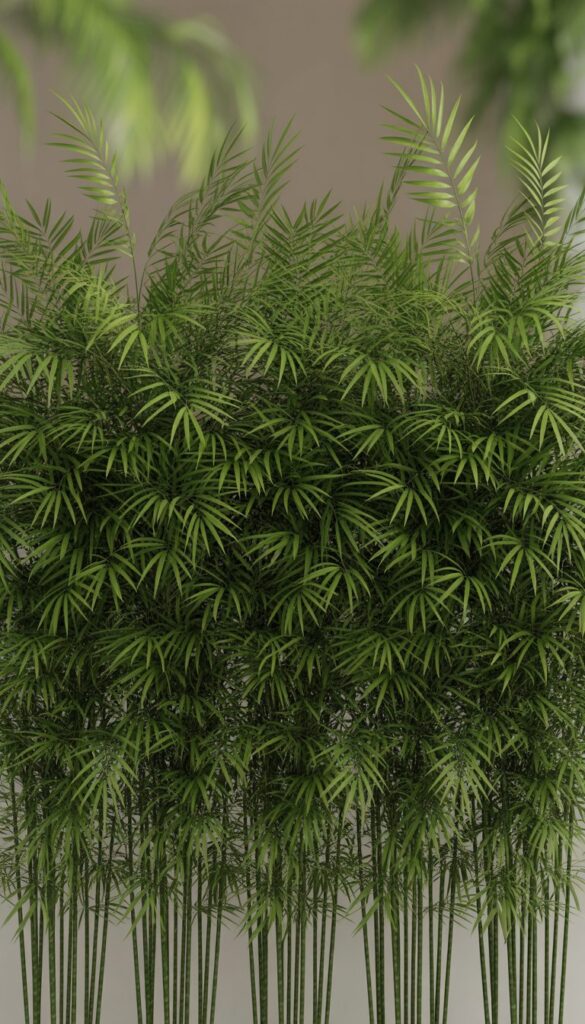
Bamboo palms shoot up to 15 or even 20 feet outdoors, making a fantastic privacy screen. Indoors, they stay more modest—usually around 7 feet.
Their lush leaves block views and add a bit of that tropical vibe. I like that they’re not fussy—just give them low to bright indirect light.
They clean the air, too, which is a nice bonus. I just keep their soil moist so they don’t wilt.
18. American Holly

American Holly stays green year-round, which I really appreciate for privacy. It grows slowly, but can hit 40 to 60 feet if you let it.
The shiny, pointy leaves help keep animals away. I always enjoy the red berries on the female plants in winter.
I plant them about five feet apart to make a thick hedge. They handle full sun or partial shade, so they’re pretty adaptable.
19. Bay Laurel
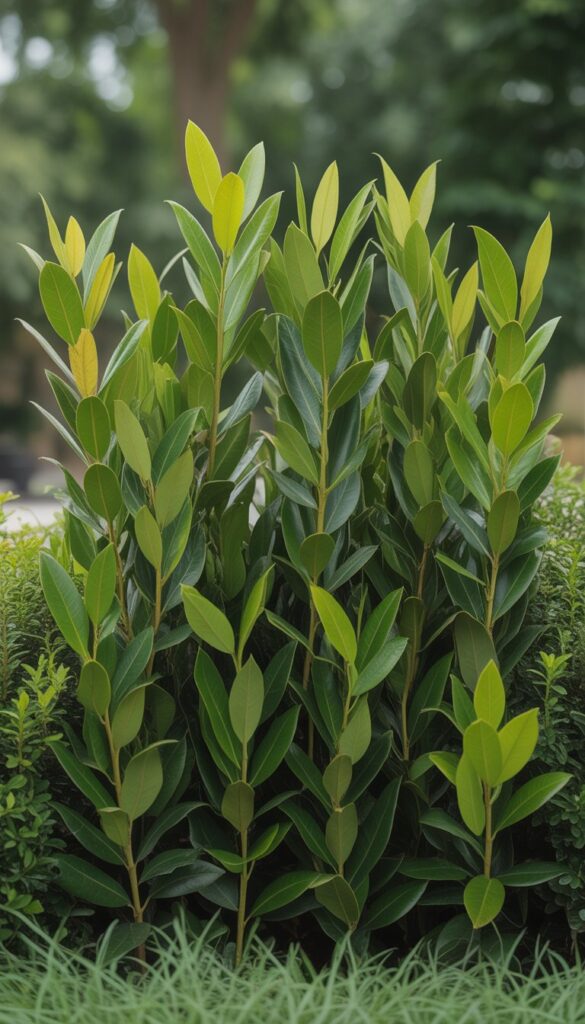
Bay Laurel works as an evergreen shrub or a small tree. It makes a dense, lush screen for privacy.
The leaves smell amazing and I love tossing them into soups and stews. They’re handy to have right outside the kitchen.
It grows slowly—maybe 8 to 16 inches a year—but can reach 20 feet in warm spots. I’ve had good luck with it in containers, too.
It’s simple to care for and brings both beauty and usefulness to my yard. Can’t really ask for more, right?
20. Forsythia
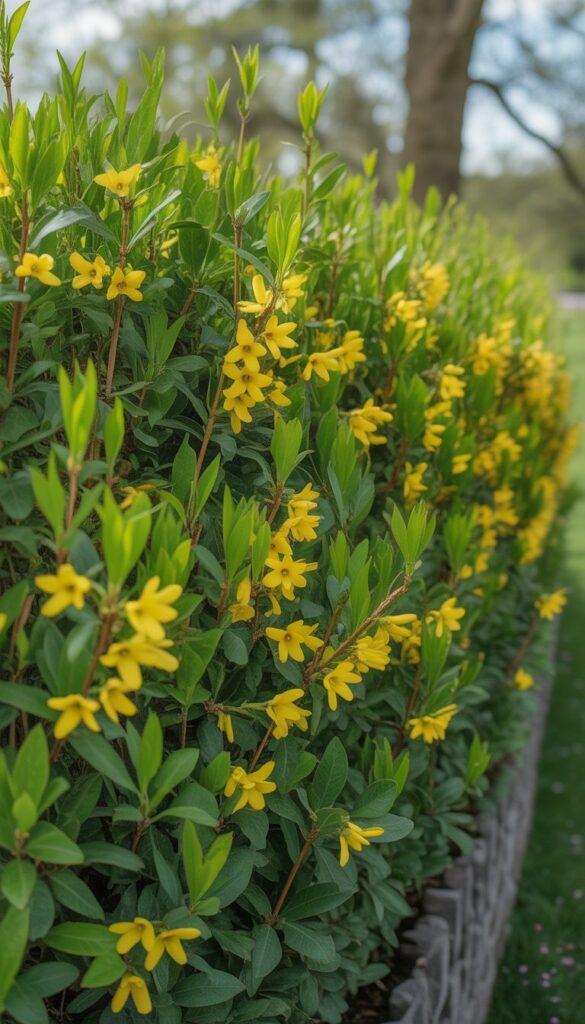
Forsythia is a burst of sunshine early in spring. It grows fast and gets up to 10 feet tall, so it’s awesome for privacy.
This shrub loves full sun but can handle some shade. I space them 3 to 4 feet apart to let them fill out and get bushy.
What’s cool is that it blooms before the leaves pop out. When everything else is still bare, it’s already showing off bright yellow flowers.
How To Choose The Right Privacy Plants

Picking privacy plants isn’t just about what looks good. I think about how much privacy I want, where I live, and honestly, how much time I feel like spending on upkeep.
I try to match plants with my yard’s sunlight and soil. Knowing what I’m working with saves a lot of trouble down the road.
Assessing Your Privacy Needs
First, I ask myself: how much privacy do I really need? Am I just blocking a neighbor’s window or do I want a full-on garden fortress?
Tall hedges or fast-growing trees work best for big spaces. If I need something more subtle, I’ll use climbing plants on a trellis or a few thick shrubs.
Yard size matters, too. For small spots, compact plants or pots keep things from getting crowded.
Privacy is personal. I try to balance how much coverage I want with how open I want my space to feel—there’s no one-size-fits-all answer.
Climate And Soil Considerations
I always check my climate zone before picking plants. What thrives up north might just wilt in the south, and vice versa.
Soil matters, too. Some plants, like holly, need well-drained dirt, while others don’t mind a soggy patch now and then.
Sunlight can make or break a privacy plant. I choose sun-lovers for open areas, and shade-tolerant types for tucked-away corners.
Matching plants to my yard’s quirks means less hassle and better results. Honestly, it’s worth the extra few minutes of planning.
Growth Rate And Maintenance
Choosing plants based on growth speed saves time. Fast growers like bamboo or Leyland cypress quickly create privacy, but they need regular trimming.
Slower-growing plants mean less pruning. But you’ll need some patience to see results.
I usually decide based on how much time I want to spend maintaining my garden. Maintenance also includes watering and pruning.
Some plants need frequent watering. Others, like junipers, shrug off drought and don’t ask for much.
Honestly, I just make a list of plants that fit my schedule and yard conditions. It helps keep my privacy screen manageable and looking good, without making me feel overwhelmed.
